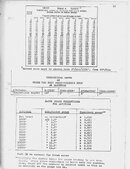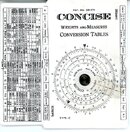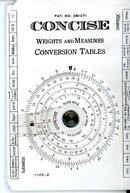This thread is a repository of the information on altitude diving I gained in the 1970s through NAUI's Altitude Diving Conference. I have notes from that conference, but first here is the E.R. Cross article in TechniFacts from Skin Diver Magazine, November 1970. It also contains a short article titled "Decompression Considerations for Diving at Altitude in Fresh Water," by Jon Pegg, M.D., May of 1965.
You are using an out of date browser. It may not display this or other websites correctly.
You should upgrade or use an alternative browser.
You should upgrade or use an alternative browser.
History of Altitude Diving
- Thread starter John C. Ratliff
- Start date
Please register or login
Welcome to ScubaBoard, the world's largest scuba diving community. Registration is not required to read the forums, but we encourage you to join. Joining has its benefits and enables you to participate in the discussions.
Benefits of registering include
- Ability to post and comment on topics and discussions.
- A Free photo gallery to share your dive photos with the world.
- You can make this box go away
When diving at altitude, we need to correct analog depth gauges and decompression tables. Here is a sheet I developed in the 1970s, and used for a long, long time, for diving at altitude. I had a copy of it in my dive log that I took to the dive site.
SeaRat
SeaRat
Attachments
Thanks for the posting. I wouldn’t call this history of Altitude Diving, rather it is an article about how to use sea-level dive tables when diving in mountain lakes.
This brings up an interesting dilemma - why is it called high altitude diving instead of diving at high elevation. There is a difference between the two terms:
Altitude refers to the height of an object above a given point.
Elevation refers to the height of a place above the mean sea level.
In short, sky divers dive at altitude, while scuba divers dive at elevation.
This brings up an interesting dilemma - why is it called high altitude diving instead of diving at high elevation. There is a difference between the two terms:
Altitude refers to the height of an object above a given point.
Elevation refers to the height of a place above the mean sea level.
In short, sky divers dive at altitude, while scuba divers dive at elevation.
Great material. Thanks for the information.
In answer to you question, I have a specific answer: "I don't know."Thanks for the posting. I wouldn’t call this history of Altitude Diving, rather it is an article about how to use sea-level dive tables when diving in mountain lakes.
This brings up an interesting dilemma - why is it called high altitude diving instead of diving at high elevation. There is a difference between the two terms:
Altitude refers to the height of an object above a given point.
Elevation refers to the height of a place above the mean sea level.
In short, sky divers dive at altitude, while scuba divers dive at elevation.
Now, for another piece of my history, I present my early dive computer, a circular slide rule. Before dive computers, before smart watches, before the calculator, we had slide rules. I had several, but this one has a special notation on its back for converting depth at altitude. If you look at the circular slide rule, you'll see that the outer scale, the "D-scale" is set at "2," and on the inner "C1" scale (second inside scale) it is also set at "2." If you then go to the highlighted "!" in dark, you'll see that on the outer scale it is at "4," meaning that:
2 x 2 = 4
Don't laugh, these analog calculators, the slide rule, got us to and from the moon, especially on Apollo 13 where they needed to make calculations on-the-spot. Now, for a dive at 4000 feet in Clear Lake, my capillary depth gauge registered 60 feet. Using the calculator, I see that the correction at 4000 feet is 0.887, meaning that I needed to multiply the reading of 60 feet by 0.887 to get the true depth. In slide rule nomenclature, this is:
(6 feet x
(This is slightly off, as with the circular slide rule, the second number had to be estimated by where the line came to; the actual number is 53.22 feet.) Circular Slide Rule003.jpg shows this calculation.
A lot of us used the capillary depth gauge at altitude for this reason, it read deep. So we actually had a safety factor by using this simple gauge for our diving.
Now, this particular slide rule also had tables which showed different types of measures for lengths and squares on one side, and weight and cubic measurements on the other. I have pulled out the tables, which are a sliding table insert inside the slide rule.
SeaRat
Attachments
In the summer of 1974, the U.S. Air Force Aerospace Rescue and Recovery Service sent me to the NAUI High Altitude Diving Conference at South Lake Shore, Lake Tahoe. I believe it was a multi-day conference, with lectures on the first and second day. I did some diving on the afternoon of the second day with some of the conference participants, including as I recall Larry Murphy of the Warm Mineral Springs Underwater Archaeological Project (which I subsequently dove on) and Daniel Lenihan of the National Park Service's Submerged Resources Center.
Bob Toler was the Conference Sponsor, and spoke at one point. But the initial speaker was Dr. Al Behnke. I took careful notes, and when I got back to Corvallis, Oregon transcribed those notes into typewritten text with hand-written graphics. You will note that this was before even the most primitive computers and word processors, and that this was written on my manual, portable typewriter. The only word processing I had then was erasable typewriter paper. Dr. Behnke's talk was riveting, and I had the privilege of capturing some of his discussion that I don't think was ever published (he was one of the foremost published authors of diving research papers too).
So these handwritten and typed notes are presented for their historical context, noting that they are 47 years old now. I have kept them in my NAUI Instructor's Blue Book for all these years, and so they are in good shape for their age. But also remember that a whole lot of further research has occurred in the intervening years. I will present Bob Toler's information in a different post here on this thread.
I was studying for my Bachelor of Science Degree in Zoology at the time through Oregon State University too, and so had become fairly good at taking notes.
SeaRat
Bob Toler was the Conference Sponsor, and spoke at one point. But the initial speaker was Dr. Al Behnke. I took careful notes, and when I got back to Corvallis, Oregon transcribed those notes into typewritten text with hand-written graphics. You will note that this was before even the most primitive computers and word processors, and that this was written on my manual, portable typewriter. The only word processing I had then was erasable typewriter paper. Dr. Behnke's talk was riveting, and I had the privilege of capturing some of his discussion that I don't think was ever published (he was one of the foremost published authors of diving research papers too).
So these handwritten and typed notes are presented for their historical context, noting that they are 47 years old now. I have kept them in my NAUI Instructor's Blue Book for all these years, and so they are in good shape for their age. But also remember that a whole lot of further research has occurred in the intervening years. I will present Bob Toler's information in a different post here on this thread.
I was studying for my Bachelor of Science Degree in Zoology at the time through Oregon State University too, and so had become fairly good at taking notes.
SeaRat
Attachments
Your notes are rather interesting. The conference took place the summer before NAUI published it’s book (Jan ‘75) on diving above sea level. I wonder if much of what the conference covered is in the book. Mine is in storage so I don’t have a way of comparing your notes to the book.In the summer of 1974, the U.S. Air Force Aerospace Rescue and Recovery Service sent me to the NAUI High Altitude Diving Conference at South Lake Shore, Lake Tahoe. I believe it was a multi-day conference, with lectures on the first and second day. I did some diving on the afternoon of the second day with some of the conference participants, including as I recall Larry Murphy of the Warm Mineral Springs Underwater Archaeological Project (which I subsequently dove on) and Daniel Lenihan of the National Park Service's Submerged Resources Center.
Bob Toler was the Conference Sponsor, and spoke at one point. But the initial speaker was Dr. Al Behnke. I took careful notes, and when I got back to Corvallis, Oregon transcribed those notes into typewritten text with hand-written graphics. You will note that this was before even the most primitive computers and word processors, and that this was written on my manual, portable typewriter. The only word processing I had then was erasable typewriter paper. Dr. Behnke's talk was riveting, and I had the privilege of capturing some of his discussion that I don't think was ever published (he was one of the foremost published authors of diving research papers too).
So these handwritten and typed notes are presented for their historical context, noting that they are 47 years old now. I have kept them in my NAUI Instructor's Blue Book for all these years, and so they are in good shape for their age. But also remember that a whole lot of further research has occurred in the intervening years. I will present Bob Toler's information in a different post here on this thread.
I was studying for my Bachelor of Science Degree in Zoology at the time through Oregon State University too, and so had become fairly good at taking notes.
SeaRat
I’ve enjoyed studying and conducting dives in alpine mountain lakes. There isn’t a whole lot of information, yet there is some. Of course, not many divers are interested in diving at high elevations. When I mention it to some of my fellow divers who don’t live in the mountains they find it unfathomable to dive in such conditions.
Nice double meaning on "unfathomable"I’ve enjoyed studying and conducting dives in alpine mountain lakes. There isn’t a whole lot of information, yet there is some. Of course, not many divers are interested in diving at high elevations. When I mention it to some of my fellow divers who don’t live in the mountains they find it unfathomable to dive in such conditions.
I find the freshwater systems like Clear Lake fascinating, and wonderful diving.Your notes are rather interesting. The conference took place the summer before NAUI published it’s book (Jan ‘75) on diving above sea level. I wonder if much of what the conference covered is in the book. Mine is in storage so I don’t have a way of comparing your notes to the book.
I’ve enjoyed studying and conducting dives in alpine mountain lakes. There isn’t a whole lot of information, yet there is some. Of course, not many divers are interested in diving at high elevations. When I mention it to some of my fellow divers who don’t live in the mountains they find it unfathomable to dive in such conditions.
 Dry Suit Dive, Clear Lake_edited-1 by John Ratliff, on Flickr
Dry Suit Dive, Clear Lake_edited-1 by John Ratliff, on FlickrClear Lake in the Oregon Cascade Mountains is the headwaters of the McKenzie River, and is at about 3,000 feet elevation. But 4,000 should be used, as the mountain passes are at that elevation for the drive home.
SeaRat
I have many hundreds of dives in a large (about 500 feet across and 280 feet deep) sinkhole in New Mexico, at about 4,600 feet elevation. Exploring the features is fascinating. Some of the views of the shallow vegetation hanging off the cliff edges are spectacular. I don't believe I could ever grow tired of that one site.
Similar threads
- Replies
- 9
- Views
- 6,247
- Replies
- 0
- Views
- 712
- Replies
- 32
- Views
- 15,737
- Replies
- 24
- Views
- 6,614
- Replies
- 0
- Views
- 1,255







